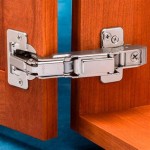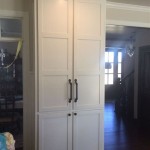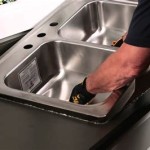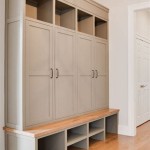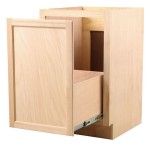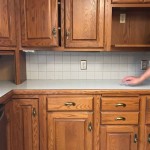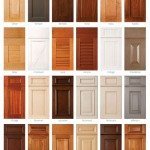Stripping Paint From Old Kitchen Cabinets: Giving New Life to a Beloved Feature
Kitchen cabinets, often a focal point of the room, hold a unique place in a home's design. When these cabinets age, their paint may chip, fade, or simply become outdated, leaving a less-than-desirable aesthetic. Thankfully, stripping paint from old kitchen cabinets can breathe new life into these fixtures, allowing them to match the evolving style of the home while preserving their original structure. This process, while requiring time and effort, can be a rewarding project for DIY enthusiasts looking to enhance the look of their kitchen.
Why Strip Paint?
Stripping paint from kitchen cabinets offers a distinct advantage over simply painting over existing layers: it ensures a smooth, even surface for the new coat. This is especially important when dealing with cabinets that have multiple layers of paint, as uneven surfaces can lead to imperfections in the final finish. Stripping also allows for the removal of any potential contaminants or imperfections in the original paint, leading to a cleaner and more durable result.
Further, stripping offers a way to unveil the original wood grain underneath the paint. This can be particularly appealing if the cabinets feature beautiful wood that has been hidden for years. For those who prefer a more natural, rustic look, stripping provides a unique opportunity to showcase the character of the original material.
Choosing the Right Stripping Method
The process of stripping paint from kitchen cabinets can be approached in different ways, each with its own advantages and disadvantages. The most common methods include:
Chemical Strippers
Chemical strippers are a popular option due to their effectiveness in removing multiple layers of paint. These solutions, available in liquid or gel form, contain strong chemicals that break down the paint's bonding structure, allowing it to be easily scraped away. While effective, chemical strippers require careful handling due to their potentially harmful nature. It's essential to use proper ventilation, protective gear, and follow the manufacturer's instructions meticulously to avoid accidents or damage to the cabinets.
Heat Guns
Heat guns, utilizing high-temperature air to soften the paint, offer a more environmentally friendly approach to stripping. The heat loosens the paint's adhesion to the wood, enabling easy removal with a scraper. While effective, this method requires caution as excessive heat could damage the wood itself. It's crucial to monitor the temperature and avoid prolonged exposure to prevent warping or burning.
Sanding
For thin layers of paint or a more gentle approach, sanding can be a viable option. This method involves progressively using sandpaper of increasing grit to remove the paint, ultimately revealing the wood underneath. While less aggressive than chemical strippers, sanding requires significant effort and time, especially for older cabinets with multiple layers of paint. Additionally, sanding can create dust, making proper ventilation and dust control crucial during the process.
Preparing for the Stripping Process
Prior to stripping, proper preparation is crucial for achieving a successful outcome. This involves:
Disassembling Cabinets
To ensure efficient and thorough stripping, it's recommended to disassemble the cabinets as much as possible. Removing doors, drawers, and hardware allows for easier access to all surfaces and prevents the risk of damaging delicate components during the stripping process.
Cleaning and Masking
Before applying any stripping solution, ensure the cabinets are free of dust, grease, and grime. This can be achieved using a mild detergent and water. Once clean, mask areas that are not intended to be stripped, such as hinges, hardware, or surrounding surfaces. This prevents accidental damage or unwanted stripping.
Safety Precautions
Stripping paint involves the use of potentially harmful chemicals and tools. It's imperative to prioritize safety throughout the process, including:
Ventilation
Ensure adequate ventilation to avoid inhaling fumes from chemical strippers or dust from sanding. Open windows, use fans, and consider wearing a respirator mask if necessary.
Protective Gear
Wear appropriate protective gear such as gloves, goggles, and a long-sleeved shirt to protect your skin and eyes from harmful chemicals and dust.
Fire Safety
Be mindful of fire hazards associated with heat guns. Keep the tool away from flammable materials and use it in a well-ventilated area.
Disposal of Waste
Dispose of stripped paint and cleaning solutions responsibly. Consult local regulations concerning hazardous waste disposal and follow proper protocol to minimize environmental impact.

How To Paint Kitchen Cabinets Without Sanding Or Priming

Updating A Kitchen For New Generation Destination Restoration Kilz

Kitchen Cabinets Updated With Paint Trim My Repurposed Life

How To Paint Kitchen Cabinets Cupboard Guide Stillorgan Decor

Kitchen Cabinets Updated With Paint Trim My Repurposed Life

How To Paint Kitchen Cabinets Without Sanding Or Priming

How To Paint Oak Cabinets My Repurposed Life

Updating A Kitchen For New Generation Destination Restoration Kilz

How I Painted My Kitchen Cupboards On A Budget Dove Cottage

Transform Your Cabinets With A Smooth Paint Job Diy Tutorial
Related Posts

